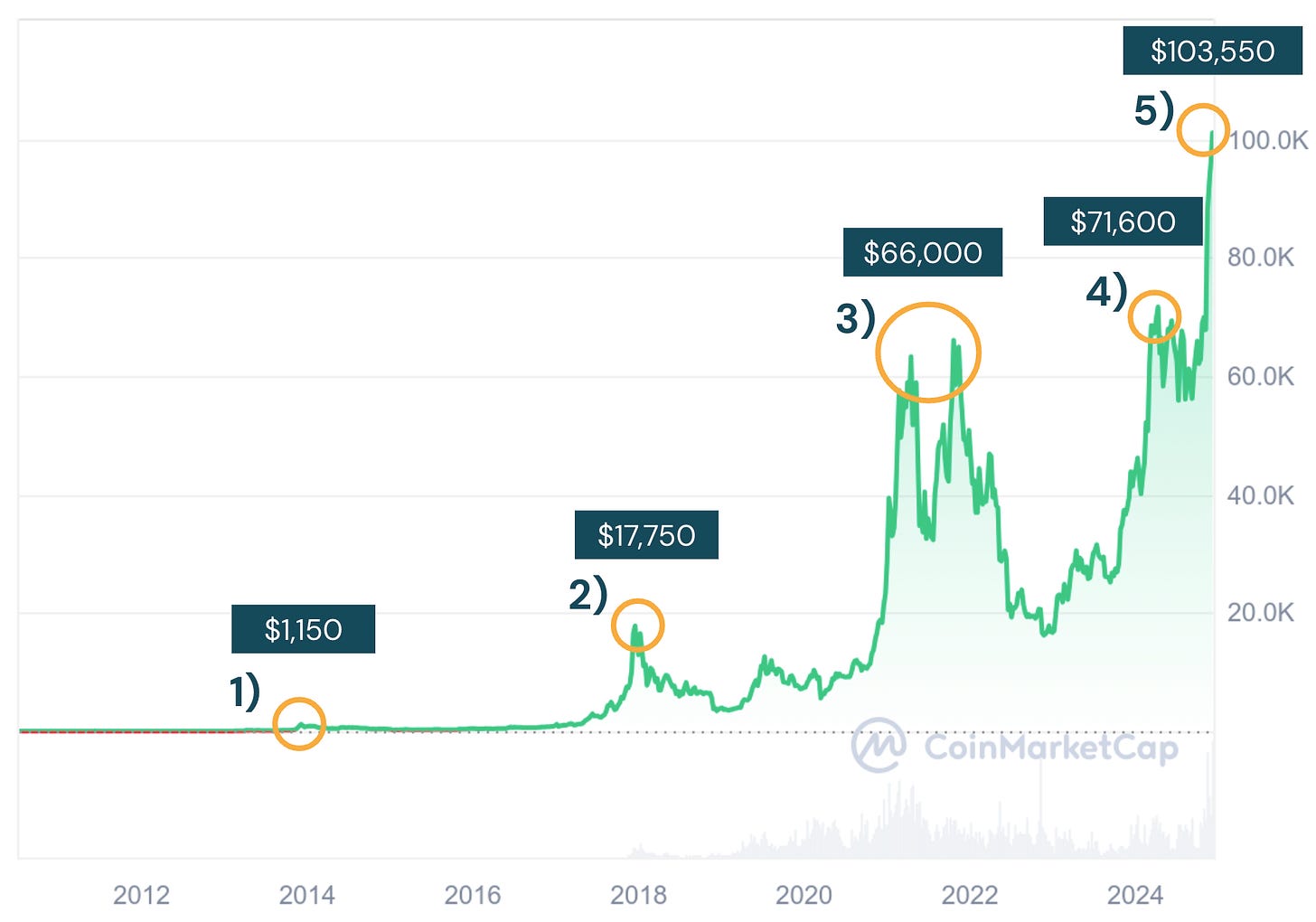The $100,000 Question: What’s Driving Bitcoin’s Rise?
A deep dive into the key drivers and market fundamentals behind Bitcoin’s milestone
Welcome to this first deep dive! This week, Bitcoin hit the $100,000 mark—an important milestone for digital assets. But is this valuation truly justified? In this article, I break down the key drivers and assess Bitcoin’s market fundamentals to answer that question. Let’s dive in!
Key Takeaways
Bitcoin’s rise to $100,000 marks a major milestone, reflecting its growing legitimacy as a financial asset.
In 2024, key drivers included spot ETF approvals, corporate investments, and pro-crypto regulatory sentiment following the U.S. election.
Market fundamentals reveal ETF-driven liquidity and declining volatility, but also signs of plateauing growth in network activity and total transfers.
Bitcoin’s future hinges on balancing adoption with risks like centralized holdings and regulatory uncertainty.
On December 4, 2024, Bitcoin reached $100,000, marking a pivotal milestone in its 15-year history. This achievement was fueled by key factors, including increased institutional adoption through spot Exchange Traded Funds (ETFs), significant corporate investments, and optimism surrounding a pro-crypto U.S. administration. While this milestone underscores Bitcoin’s growing role in the financial system, it also brings important questions to the forefront about the sustainability of its valuation and long-term prospects.
To address these questions, this article examines Bitcoin’s journey to $100,000, exploring its historical milestones, the key drivers behind its rise, and the market fundamentals that underpin its valuation. Through this analysis, I aim to provide a balanced perspective on whether Bitcoin’s current valuation is sustainable and what its future may hold.
The Journey to $100,000: A Historical Perspective
Crossing the $100,000 mark represents the latest milestone in Bitcoin’s evolution from a niche digital asset to a recognized financial instrument. This achievement builds on a history of price surges that have shaped its role in global finance (see Figure 1).
Each major price milestone reflects pivotal moments in Bitcoin’s growth, shaped by unique market dynamics:
2013 ($1,000 milestone): Bitcoin reached $1,000 for the first time, driven by early adoption and speculative trading on platforms like Mt. Gox.
2017 (~$18,000 milestone): The ICO (Initial Coin Offering) boom, speculative retail demand, and FOMO (fear of missing out) propelled Bitcoin to $17,700, supported by increased media attention and retail participation.
2021 ($66,000 milestone): Institutional interest, driven by Tesla’s Bitcoin purchases and the launch of Bitcoin futures, pushed Bitcoin to $66,000. This marked a shift toward mainstream acceptance but also highlighted Bitcoin’s volatility, as regulatory concerns triggered a sharp correction.
April 2024 (~$72,000 milestone): Early in the year, Bitcoin surged to nearly $72,000 following the approval of Bitcoin and Ethereum spot ETFs. These ETFs provided regulated access to cryptocurrency markets, attracting significant institutional investment.
December 2024 ($100,000 milestone): By this year’s end, Bitcoin crossed the $100,000 mark, driven by major corporate purchases, the 2024 halving, and optimism following the election of a pro-crypto U.S. administration.
These milestones chart Bitcoin’s evolution into a recognized financial asset, with narratives shifting from a store of value to a potential sovereign strategic asset.
The Key Drivers in 2024
In 2024, unique market forces further influenced Bitcoin’s trajectory. Building on trends from previous cycles, these drivers introduced new dynamics that defined this year’s market environment (see Figure 2).
Keep reading with a 7-day free trial
Subscribe to Digital Finance Briefing to keep reading this post and get 7 days of free access to the full post archives.





